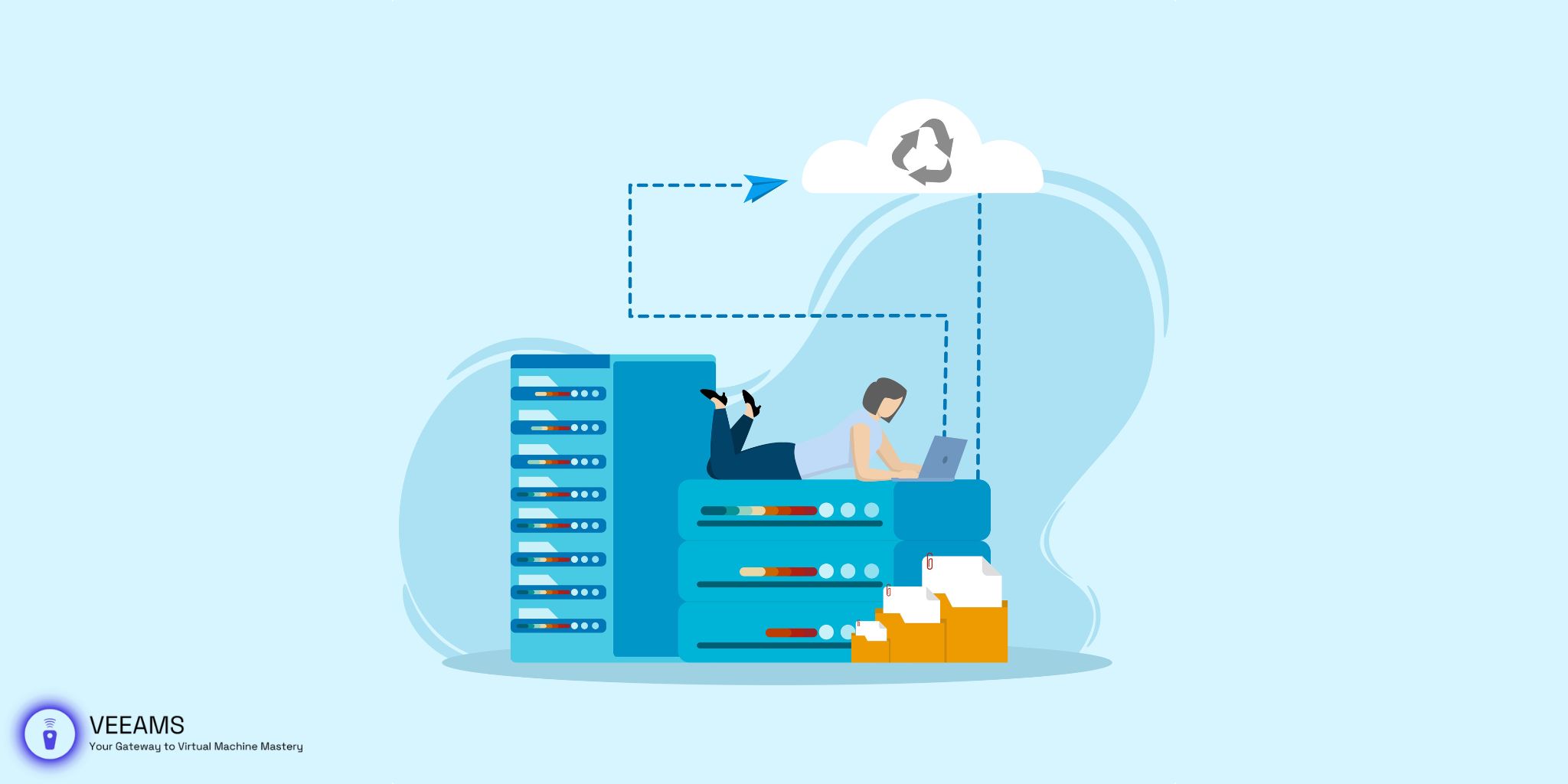Welcome to our comprehensive guide on optimizing your VBK management through deduplication and compression. In today’s data-driven world, managing storage efficiently is more critical than ever. This guide is designed to provide you with practical tips and strategies to enhance your VBK file handling, ensuring that your data storage is not only efficient but also cost-effective. Whether you’re a seasoned IT professional or new to VBK files, our step-by-step approach will help you understand and implement these essential techniques with ease.
The Basics of Deduplication
Deduplication is a data compression technique designed to eliminate duplicate copies of repeating data within your storage. In the context of VBK (Veeam Backup & Replication) files, deduplication plays a pivotal role in optimizing storage space and improving backup and recovery processes. By analyzing the data set for duplicate information and storing only one copy of that data, deduplication ensures that your storage is utilized as efficiently as possible.
This process not only conserves valuable storage space but also enhances the performance of backup operations by reducing the amount of data that needs to be transferred and stored. Furthermore, deduplication contributes to faster recovery times, as there’s less data to process during restoration.
Implementing deduplication requires a thorough understanding of your data and storage needs. The goal is to identify and eliminate redundancy without compromising data integrity or accessibility. In the following sections, we’ll guide you through implementing deduplication for your VBK files, ensuring that you can achieve the best possible efficiency and storage savings.
Implementation of Deduplication for VBK Files
To effectively implement deduplication for VBK files, follow these more technical and detailed steps:
- Analyze Your Data Patterns: Start by analyzing the data patterns within your VBK files. Use tools that can give you insights into duplicate data patterns. This step is crucial for understanding where deduplication will be most effective.
- Select a Deduplication Method: Choose between post-process deduplication and inline deduplication. Post-process deduplication happens after the data is written to the storage, while inline deduplication occurs as data is being written. Inline deduplication is more efficient for VBK files due to their large size and the frequency of backups.
- Implement Block-Level Deduplication: For VBK files, block-level deduplication is more efficient than file-level. It identifies and eliminates duplicate blocks of data within files, which is crucial for backup files that often contain large blocks of repeating data.
- Configure Deduplication Tool Settings: Use a deduplication tool that integrates well with your backup solution. Configure it to target VBK files specifically. Adjust settings like deduplication block size and scheduling according to your analysis from step 1.
- Test and Monitor: After configuring, run tests to ensure that the deduplication process doesn’t impact data integrity. Monitor the performance and the space savings achieved. Adjust configurations as needed based on performance metrics.
Step-by-Step Compression Techniques for VBK Management
Following deduplication, compressing your VBK files can further reduce their size. Here’s how to do it effectively:
- Choose a Compression Algorithm: Start by selecting a compression algorithm suitable for VBK files. Algorithms like LZ4 offer fast compression and decompression speeds, which are ideal for large backup files.
- Implement Compression After Deduplication: Always compress your VBK files after deduplication. Compression before deduplication can make it harder to identify duplicate data, reducing the effectiveness of deduplication.
- Adjust Compression Settings Based on Needs: Compression tools often allow you to choose between different compression levels. Higher levels provide greater compression at the cost of increased CPU usage. Test different settings to find the right balance between compression efficiency and system performance.
- Automate Compression Processes: Use scripting or task schedulers to automate the compression of VBK files. Automating this process ensures that files are consistently compressed after each backup process, saving time and reducing manual errors.
- Regularly Review Compression Results: Monitor the impact of compression on storage space and backup times. Reviewing these results regularly helps you adjust the process to ensure optimal performance and space savings.

Implementing Compression for VBK Files
To effectively implement compression on your VBK files and achieve optimal storage efficiency, follow these detailed, actionable steps:
- Selecting the Right Compression Software:
- Begin by selecting compression software that is known for its effectiveness with large files like VBKs. If your backup solution offers built-in compression options, evaluate these first, as they’re likely optimized for the file types they handle.
- Configuring Compression Settings:
- Access the compression settings within your backup or compression software. Look for options related to compression ratio or level, and select a level that offers a balance between compression efficiency and processing time. High compression levels can save more space but may significantly increase backup times.
- Testing Compression on Sample Data:
- Before applying compression broadly, test your selected settings on a small set of VBK files. This will allow you to gauge the impact on file size reduction and any potential performance degradation during backup and recovery processes.
- Applying Compression to VBK Files:
- Once you’ve selected and tested your compression settings, apply them to your VBK files. This can typically be done as part of the backup process within your backup software, where you specify that files should be compressed as they’re backed up.
- Automating the Compression Process:
- To ensure ongoing efficiency, automate the compression process within your backup software. Set up a schedule that automatically applies compression to new or modified VBK files as part of the backup routine.
- Monitoring the Impact of Compression:
- After implementing compression, monitor its impact on both file sizes and backup/recovery performance. Use your backup software’s reporting tools to track metrics like storage space saved and any changes in backup/recovery times.
- Adjusting Settings as Needed:
- Based on your monitoring, adjust compression settings as needed to find the optimal balance for your specific environment. This may involve changing compression levels or scheduling backups during off-peak hours to minimize impact on system performance.
- Documenting Your Compression Strategy:
- Finally, document your compression strategy, including the software used, settings chosen, and any insights gained from monitoring and adjustments. This documentation will be valuable for ongoing management and for onboarding new team members.
Tools and Software for VBK Deduplication and Compression
Implementing deduplication and compression effectively requires the right tools. Here are some recommendations for software that excels in handling these tasks, especially for VBK files:
- Veeam Backup & Replication:
- Overview: A comprehensive backup and recovery solution that offers advanced deduplication and compression capabilities specifically designed for VBK files.
- How to Use: Within Veeam, you can configure deduplication and compression settings globally or at the job level, allowing for tailored data reduction strategies based on your specific needs.
- Data Domain (Dell EMC):
- Overview: Known for its deduplication storage systems, Data Domain offers high-speed, variable-length deduplication which can be particularly effective for VBK file storage.
- How to Use: Implement Data Domain systems as part of your storage infrastructure, configuring deduplication policies to optimize VBK file storage and backup processes.
- HPE StoreOnce:
- Overview: A versatile deduplication appliance that supports a range of backup applications, including Veeam, and offers high deduplication ratios.
- How to Use: Use HPE StoreOnce as a target for your VBK backups. Its integration with Veeam allows for seamless deduplication and replication of VBK files across your infrastructure.
- Quantum DXi Series:
- Overview: Offers high-performance deduplication solutions that can scale from small businesses to large enterprises, suitable for VBK file deduplication and compression.
- How to Use: Deploy Quantum DXi appliances as part of your backup strategy, utilizing their patented data deduplication technology to reduce storage needs and backup windows for VBK files.
- ExaGrid:
- Overview: Provides tiered backup storage with built-in deduplication, specifically optimized for backup and recovery efficiency.
- How to Use: Incorporate ExaGrid systems into your backup architecture, leveraging their unique landing zone and deduplication zone architecture to accelerate VBK file backups and restores while minimizing storage requirements.
Selecting the Right Tool
When choosing the right tool for VBK deduplication and compression, consider the following factors:
- Compatibility: Ensure the tool integrates seamlessly with your existing backup software and infrastructure.
- Performance: Evaluate the impact on backup and recovery times, aiming for solutions that offer efficient data reduction without compromising performance.
- Scalability: Choose solutions that can grow with your data needs, offering easy scalability without significant overhauls to your infrastructure.
- Cost-effectiveness: Consider both upfront costs and long-term savings in storage and operational efficiencies.
Conclusion
Efficient management of VBK files through deduplication and compression is essential in today’s data-intensive environments. By understanding and implementing the strategies outlined in this guide, you can significantly enhance your storage efficiency, reduce costs, and ensure faster, more reliable backups and recoveries.
However, we recognize that every environment is unique, and you may have specific questions or face challenges tailored to your setup. If there are any aspects of VBK deduplication and compression that you’re unsure about or if you’re seeking advice on optimizing your specific system, please don’t hesitate to leave a comment below. We’re here to help and eager to share more insights to assist you in mastering VBK management.
